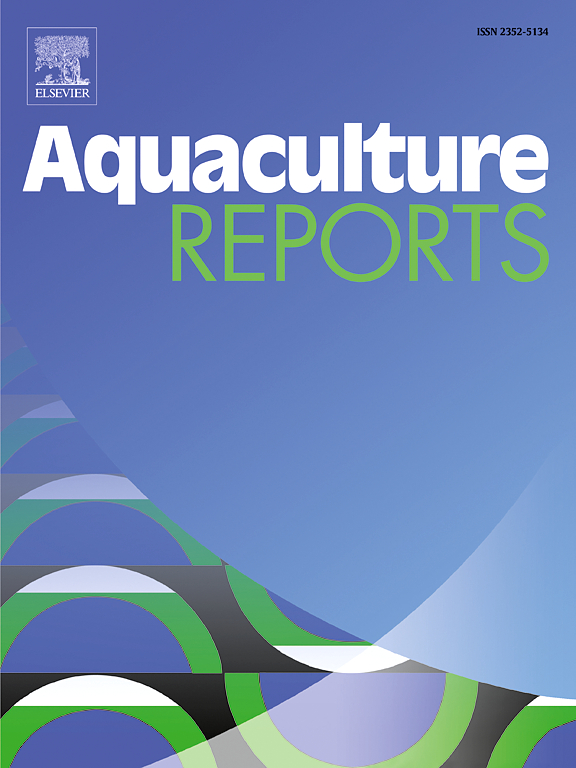Positive effects of optimal dietary protein content on the growth, reproductive performance and health of Procambarus clarkii broodstock farming in rice field
IF 3.2
2区 农林科学
Q1 FISHERIES
引用次数: 0
Abstract
This study was conducted to evaluate the optimal protein requirement of Procambarus clarkii cultured in paddy field, six isoenergetic and isolipid diets were formulated to contain graded levels of 28 %, 31 %, 34 %, 37 %, 40 % and 43 % crude protein (called P28–43 group). There were 3 replicates in each treatment and 20 crayfish in each replicate with an initial average body weight of (20.30 ± 0.24) g were fed for 56 days. Our results showed that final body weight was maximized in the P31 group, the weight gain rate and specific growth rate were maximized in the P34 group, all of which were significantly higher than those of P28 group (P < 0.05). Significant improvements in reproductive index, fecundity, egg diameter and egg production were found by increasing the dietary protein level from 28 % to 37 % (P < 0.05), while no significant increase was observed when the protein level was further increased to 43 % (P > 0.05). Total essential amino acids, total non-essential amino acids, and total amino acids in muscle were not significantly affected by dietary protein content, all of which were lowest in P28 group. Muscle protein content significantly increased as dietary protein level increasing and was highest in P37 group (P < 0.05). There was no significant difference in muscle moisture, crude lipid and crude ash content of among all groups (P > 0.05). P43 group showed the maximum levels of aspartate transaminase activity, with a significant difference (P < 0.05) compared to P31–37 groups. A positive correlation was observed between the dietary protein level and total bilirubin concentration. Dietary protein level had a significant impact on trypsin activity, with the P43 group showing significantly increased trypsin activity compared to the P28 group (P < 0.05). The activity of total superoxide dismutase, catalase, glutathione peroxidase, and lysozyme peaked in the P31 group and was significantly higher than in the P43 group (P < 0.05). The nitric oxide concentration was significantly higher in the P37 group compared to P28–34 and P43 groups (P < 0.05). The malondialdehyde content significantly increased as dietary protein level increasing, which was highest in the P43 group (P < 0.05). In conclusion, dietary protein level of 34.00 % provided superior growth performance for the P. clarkii broodstock, and the diets with 37.00 % protein were optimal for reproductive performance of P. clarkii broodstock in rice-crayfish culture.
求助全文
约1分钟内获得全文
求助全文
来源期刊

Aquaculture Reports
Agricultural and Biological Sciences-Animal Science and Zoology
CiteScore
5.90
自引率
8.10%
发文量
469
审稿时长
77 days
期刊介绍:
Aquaculture Reports will publish original research papers and reviews documenting outstanding science with a regional context and focus, answering the need for high quality information on novel species, systems and regions in emerging areas of aquaculture research and development, such as integrated multi-trophic aquaculture, urban aquaculture, ornamental, unfed aquaculture, offshore aquaculture and others. Papers having industry research as priority and encompassing product development research or current industry practice are encouraged.
 求助内容:
求助内容: 应助结果提醒方式:
应助结果提醒方式:


